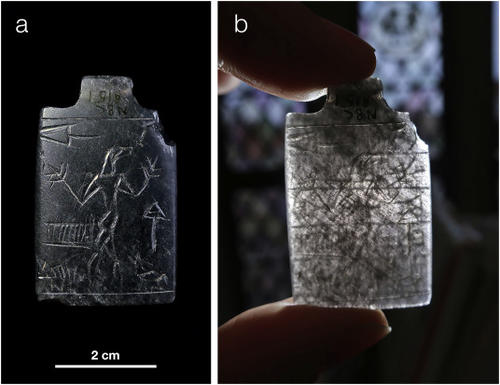
The corpus of sourced obsidian glyptic objects, like inscribed amulets and cylinder seals, is virtually nonexistent across the Near East. Here we report our findings for two obsidian amulets and two cylinder seals in the Yale Babylonian Collection and Metropolitan Museum of Art. We analyzed the artifacts using portable X-ray fluorescence, which is quantitative, nondestructive, and deployable virtually anywhere in the world. Our results establish that, for such objects, style is an unreliable predictor of obsidian source. Although the amulets are meant to protect against the same demon, they reflect different styles, skill in stone cutting, and knowledge of cuneiform, and their contexts of production must have considerably differed. The amulets’ obsidian sources, however, are identical: the Kömürcü outcrops of the Göllü Dağ volcanic complex in Anatolia. The two cylinder seals exhibit typical Old Babylonian style and iconography, and the seals’ obsidians are indistinguishable to the naked eye. One seal, however, matches the Anatolian “Bingöl B” source, one of the most important sources in Mesopotamia. The other seal matches an obsidian source that is only known from a vessel fragment unearthed from the Egyptian site of Abydos. This is, to our knowledge, the first time that Egyptian-tied obsidian has been chemically identified amongst Mesopotamian, Anatolian, or Levantine artifacts. Our findings tantalizingly suggest that such artifacts likely had more complex origins than has previously been appreciated. These results also hint that such objects might have been produced closer to the context of their use rather than nearer the volcanic sources of the stone.
Link to “Gods and demons, Anatolia and Egypt: Obsidian sourcing of Mesopotamian amulets and cylinder seals using portable XRF” at Journal of Archaeological Science: Reports.